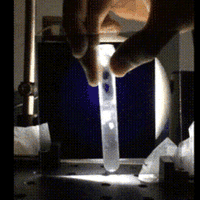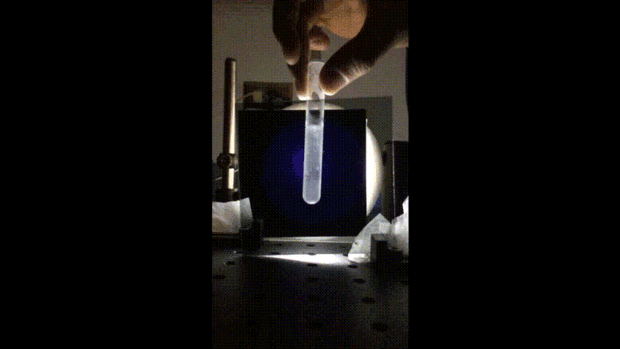
Mar 13, 2014
A Flash Freeze, In High-Def
Not only did we get to see water freeze into ice instantaneously, Rockefeller University set it up like a Vogue fashion shoot.
See, ice has bubbles in it, and when light hits the ice, the light scatters off the bubbles, and it scatters all over the place. Using a set-up that involved two squares of polarized glass, and a simple LED lamp, the crew at Rockefeller were able to channel the light, highlighting the ice front forming in real-time (though full disclosure, this Gif is slowed down), creating such a beautiful, clear, and highly contrasted flash freeze, we felt like we were witnessing the couture in ice formation.

How did this flash freeze happen? Listen to our podcast episode to find out!
...Okay, fine, if we must tell you here, the long and the short is that when water molecules get cold enough (i.e., slow enough), they'll start bonding with each other, forming microscopic hexagonal structures, and the creation of that geometric lattice is what makes ice form.
To start the bonding, water molecules need a little help -- maybe something to push them together, so they are close enough to bond; maybe something to gather around. If there is nothing to help make those structures, then water stays as liquid, even well below the freezing point. In our video here, the water is -20 degrees Celsius, even though water normally freezes at 0 degrees C.
Scientists aren't sure, but they posit that perhaps the shock wave from the TAP! on the table bumps individual H2O molecules together, and then the H2Os are like, "Oh hey! We like being this close!", and they bond into their icey structure (really fast).